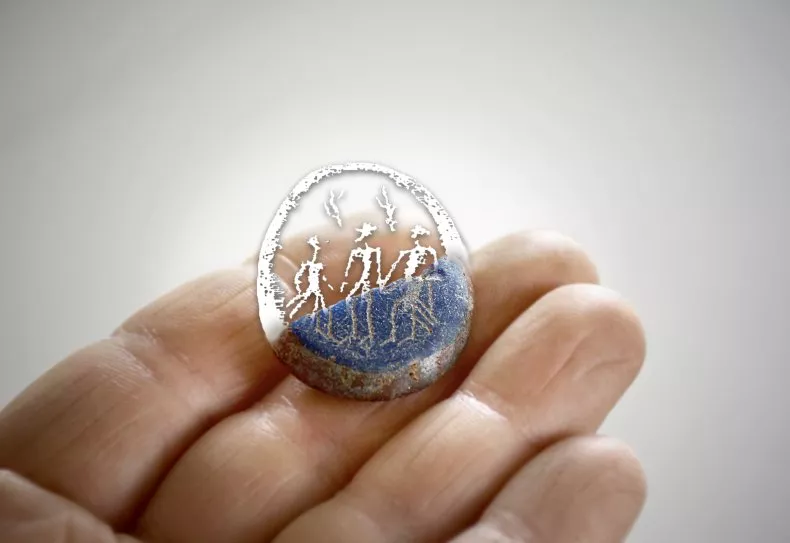Unearthing History: The Fascinating Discoveries of Kalmar's Medieval Past
This medieval gold ring with a motif of Christ was found in Kalmar, Sweden. The artifact is thought to date back to the 15th century.FRIDA ALBINSSON/ARKEOLOGERNA, SHM
In the heart of southeastern Sweden, nestled along the Baltic Sea, lies the ancient city of Kalmar—a place where the whispers of centuries past echo through the cobblestone streets and the remnants of medieval life lay buried beneath the earth. Recently, a team of dedicated archaeologists embarked on an ambitious excavation project, unearthing a treasure trove of artifacts that offer a glimpse into the rich tapestry of Kalmar's history.
Over the course of two years, these intrepid researchers delved into the heart of Kalmar's Old Town, peeling back layers of time to reveal the secrets hidden beneath the surface. What they uncovered was nothing short of spectacular—a sprawling network of streets, buildings, and artifacts dating back to the medieval period.
Among the countless treasures unearthed during their excavations, two discoveries stand out as particularly remarkable. The first is a breathtaking gold ring, believed to have been crafted in the early 15th century. Adorned with a delicate image of Christ, this exquisite piece of jewelry speaks to the faith and craftsmanship of its time. Its pristine condition suggests that it was lost to the ages over 500 years ago, only to be rediscovered by the hands of modern-day archaeologists.
The second find, known as an "alsengem," is equally fascinating. This small glass setting stone, adorned with three carved figures, likely served as an amulet for pilgrims journeying through the medieval world. Its discovery offers a tantalizing glimpse into the spiritual beliefs and practices of the people who once walked the streets of Kalmar.
A fragment of the alsengem found in Kalmar, with the missing part reconstructed to show what it might have looked like. Such objects were thought to have been used as amulets during medieval times.FRIDA ALBINSSON/ARKEOLOGERNA, SHM
But the treasures unearthed in Kalmar are not limited to jewelry and trinkets. The excavations also revealed evidence of the city's tumultuous past, including traces of the Kalmar War that ravaged the region in the early 17th century. Burned buildings, cannonballs, and musket balls serve as haunting reminders of the conflict that once engulfed these streets.
What makes the Kalmar excavation truly unique, however, is not just the individual artifacts, but the larger story they tell about life in the medieval city. Through painstaking analysis of the buildings, streets, and cultural deposits, archaeologists have gained unprecedented insights into the daily lives of Kalmar's inhabitants. From the bustling markets and workshops of craftsmen to the solemn halls of the church, each layer of excavation reveals new clues about the social and economic fabric of medieval society.
Indeed, as Magnus Stibéus, the archaeologist leading the project, aptly puts it, "Archeology becomes like a peephole into medieval history that allows us to learn more about how life was several hundred years ago." With each artifact unearthed and each layer of soil peeled away, we come one step closer to unraveling the mysteries of the past and understanding the world that shaped our own.
As the sun sets over the ancient city of Kalmar, casting long shadows across its storied streets, one cannot help but feel a sense of awe and wonder at the discoveries that lie beneath our feet. In this hidden world of buried treasures and forgotten stories, the past comes alive once more, offering a glimpse into a bygone era that continues to captivate our imagination to this day.








